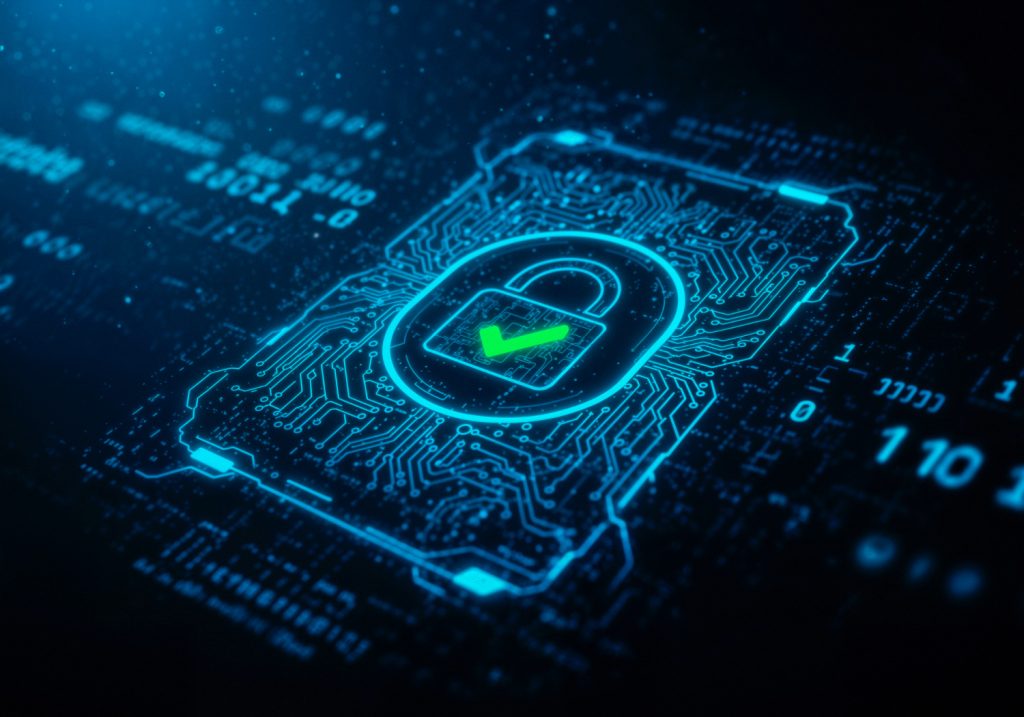
At the crossroads of identity theft and cybersecurity, the most valuable asset isn’t a server or a secret-it’s a name, a number, a profile that unlocks the rest. Identities have become both the keys and the doors of the digital world, granting access to bank accounts, workplaces, health records, and social spaces. As daily life moves across clouds and platforms, identity is no longer a static credential but a living perimeter, constantly verified, traded, challenged, and defended. This intersection is shaped by opposing forces moving at the same speed. Attackers refine social engineering, credential stuffing, SIM swapping, and synthetic identities, and now leverage AI to clone voices, forge documents, and automate reconnaissance.
Defenders respond with multi-factor authentication, passkeys, zero-trust architectures, continuous behavioral analytics, and stronger identity proofing. Between them lie unresolved tensions: convenience versus rigor, personalization versus privacy, anonymity versus accountability. The result is less a battlefield than a marketplace of risk, were data brokers, dark-web vendors, regulators, and consumers all play a part. Understanding this landscape requires more than a list of breaches or tools. It asks how identity became the new perimeter, why trust is now a dynamic score rather than a binary state, and what happens when authentication fails at scale. This article maps the terrain: the economics that incentivize identity theft, the techniques that make it work, the controls that can blunt its impact, and the policy and design choices that will shape what it means to prove who we are online.
Organizational Weak Points Shadow Data Stale Accounts Excessive Permissions and Practical Guardrails to Fix Them
At this junction where personal identifiers are currency, the easiest doors to pry open aren’t always on the perimeter-they’re inside. Unseen copies of data, dormant identities, and privilege bloat quietly expand the blast radius of a single phish or token theft. The result is a maze of access that even well-meaning teams can’t map. The remedy starts with visibility and shrinks toward precision: treat identity as a living surface, not a static directory entry; treat data as a moving asset, not a filing cabinet. When every login, API token, and dataset is cataloged, scored, and time-bound, the cost of impersonation rises. that’s the pivot from reactive alerts to proactive containment.
| Weak Point | Rapid Check | Guardrail |
|---|---|---|
| Untracked Data | No Owner Tag | Auto-discover + Assign |
| Dormant Identities | 90+ Days Idle | Auto-suspend |
| Privilege Bloat | Wide Admin Scopes | Just-in-time Access |
| Token Sprawl | Non-rotating Keys | Short TTL + Rotation |
- Continuous Discovery: Map datasets, service accounts, and keys daily; label owners and sensitivity.
- Lifecycle Hygiene: Automate joiner/mover/leaver flows; revoke as roles change.
- Least Privilege by Default: Time-box elevation; require ticket + approval trails.
- Strong Verification: Phishing-resistant MFA for admins and automation paths.
- Tamper-evident Logging: Immutable audit of reads, writes, and permission changes.
- Data Minimization: Tokenize, mask, or delete; reduce what can be stolen.
- Deception and Rate Limits: Honey credentials and throttles to slow lateral movement.
Guardrails work when they’re measurable and quiet. Track mean time to revoke after departure, percentage of least-privilege roles per team, and data inventory freshness (days as last scan). Alert only on intent and impact: unusual read volume, privilege escalation without change context, keys used from new geographies. Identity theft thrives on drift; cybersecurity wins with choreography-access that appears exactly when needed, disappears when not, and leaves a verifiable trail that narrows the attacker’s window to minutes instead of months.
When Identity Is Compromised Immediate Containment Legal and Regulatory Steps and Long Term Monitoring to Prevent Repeat Fraud
Speed defines the first hour. Contain the blast radius by cutting off attacker access, locking down financial rails, and hardening weak points they probed. In practice, that means revoking live sessions and tokens, rotating keys and passwords, elevating MFA to phishing-resistant methods, and isolating compromised devices or inboxes. Together, work the financial front: place a credit freeze with the bureaus, add a fraud alert, request temporary spending caps, and enable SIM‑swap locks with your carrier. preserve logs, headers, and screenshots-your future self, counsel, and investigators will need them.
- Kill Access: Revoke OAuth/API tokens, force logouts, reset passwords, rotate recovery codes.
- Harden Auth: Switch to passkeys/security keys; remove SMS codes; review app passwords.
- Financial Brakes: Freeze credit; alert banks; disable cards; enable transaction controls.
- Comms Safety: Lock SIM/port‑out; change email aliases; verify forwarding and filters.
- Evidence: Export logs, preserve mailbox headers, snapshot device state before wiping.
Next, align with the law and set up durable defenses. File an identity theft report (e.g., FTC) and a local police report to unlock dispute rights; work with counsel on breach notification duties (e.g., GDPR 72‑hour rule, sector rules like HIPAA/PCI). Use formal dispute channels (Reg E for debit, Reg Z for credit) and notify your cyber insurer if applicable. Then shift to long‑term visibility: schedule quarterly credit report checks, enable real‑time account alerts, automate leaked‑credential monitoring, and run recurring device and password hygiene. Treat this like a chronic condition-quiet, instrumented, and ready to respond.
- Regulatory: Assess notification thresholds; coordinate with DPA/AGs; document chain‑of‑custody.
- Restitution: Dispute transactions; freeze/reissue IDs where allowed; update KBA with providers.
- Monitoring: Credit bureau alerts; dark web and breach watch; high‑risk login notifications.
- Resilience: Annual passkey review; principle of least privilege; backup factors stored offline.
- Playbooks: Maintain a one‑page response checklist; rehearse contact and recovery steps.
| Contact | Purpose | When |
|---|---|---|
| Banks/Card Issuers | Freeze Cards, Dispute Charges | Immediately |
| Credit Bureaus | Freeze or Fraud Alert | ASAP |
| Mobile Carrier | SIM/Port‑out Lock | Immediately |
| FTC/DPA | Reports and Guidance | Within 24-72h |
| Cyber Insurer | Claims, Legal Counsel | Per Policy |
Final Thoughts…
At this crossroads, identity is both credential and narrative, and cybersecurity is both moat and microscope. The terrain is shifting: attackers iterate, defenses adapt, and the distance between a person and their data continues to collapse. What remains steady is the need for clarity about trade-offs-between convenience and control, sharing and secrecy, speed and assurance-and a recognition that no single tool, policy, or habit can shoulder the whole burden. Progress will come from alignment as much as innovation: designers building with least privilege in mind, businesses treating trust as a measurable asset, policymakers setting standards that travel across borders, and individuals cultivating digital hygiene without surrendering to fatigue. The signposts are already visible-interoperable identity, verifiable claims, privacy-preserving computation, resilient authentication. The road ahead is not linear, but it is navigable, if we keep both the map and the mirror in view: a clear picture of the systems we craft, and an honest respect for the people they are meant to protect.





